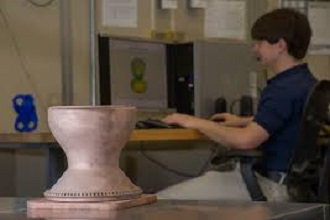The engineers at NASA have developed 3-D printed copper rocket engine part that can function at high temperatures and pressures.The part they had produced was combustion chamber liner using additive manufacturing technique, which is capable of performing at high temperatures and pressures.
Mr Steve Jurczyk, who is associate administrator for Space Technology Mission Directorate at NASA, spoke in length about the milestone achieved by building the first full scale copper rocket part with additive manufacturing technology for the ultimate mission of reaching Mars. Additive manufacturing technology helps in reducing time and cost of making.A selective laser melting machine fused 8255 layers of copper powder inorder to produce the combustion chamber in 10 days and 18hours.
A copper alloy GRCo-84, the raw material used, was produced by the scientists at NASA’s Glenn Research Centre ,Ohio where lots of characterisation was carried out. Mr Zach Jones,a material engineer, said since copper is very good conductor of heat so its very good material to be used as liner in combustion chamber.
Only handful of copper based rocket parts have been manufactured with additive technique,so this is something amasing.Usually many types of complex parts made of various materials are assembled to form an engine which gives thrust that powers rockets. The main aim was to build rocket engine parts upto 10 times faster and reducing the cost by more than 50% and for this the additive manufacturing technique would play very important role.
About Nasa
• NASA stands for National Aeronautics And Space Administration.
• It was found in the year 1958 and its headquarters is in Washington D.C.
• Its an agency responsible for civilian space programmes as well as aerospace research.
• Some of its current missions include 2001 Mars Odyssey, Chandra X-ray telescope,Kepler mission etc.





